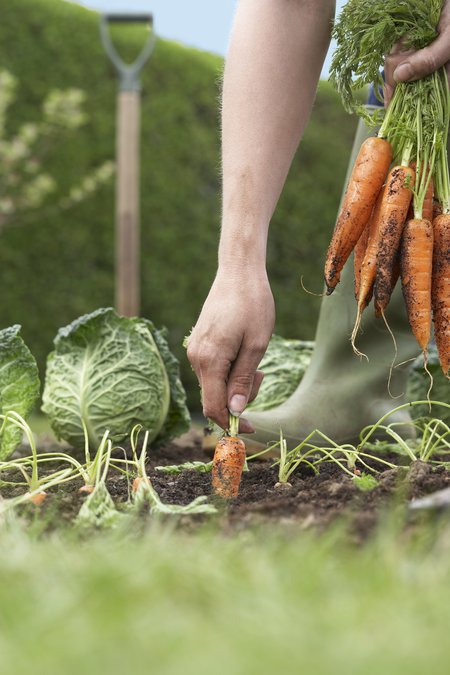Tending to backyard vegetable gardens can fill many hours of enjoyable downtime in the great outdoors. What’s more, the bounty produced by such gardens provides healthy, fresh foods to gardeners and their loved ones.
Although spring and summer are widely seen as the peak of gardening season, the mild temperatures of autumn can be a prime time for planting vegetables as well. Certain late-season treats like carrots, kale, spinach, and turnips can thrive in fall gardens. Many different foods are quick crops that can go from seed to table in about six weeks. When sown in early fall, these vegetables will be ready to put on the table for mid-October feasts. Beets, green onions, broccoli, and cabbages can be planted in late summer for fall harvest. Gardeners who live in hardiness zones eight through 10 (the southern portion of the United States) can plant fall vegetables as late as December. Many of these plants can tolerate light frost, which may even help sweeten the vegetables.
A handful of unique factors need to be taken into consideration when planning fall vegetable gardens.
The summertime location of the garden may still be adequate, but be sure to choose a location that gets eight full hours of sunlight per day.
If using an existing garden site, clear out any detritus from summer plants and any weeds that have sprouted. If you are planting a new garden, remove any turf before tilling the soil.
Amend the soil with sand, compost, manure fertilizer, and any other nutrients needed depending on the types of vegetables you intend to grow.
While fall vegetables can be grown successfully from seeds, it may be more time-friendly to work from larger transplants, advises the Texas A&M Agrilife Extension.
Some plants may need a little protection as they grow if temperatures begin to dip. Cover with a blanket, cardboard box or plastic tunnel to insulate.
Remember to water according to the vegetables planted and to keep an eye on readiness for vegetables. Turnips, beets, rutabagas, and carrots can be dug out when the roots are plump and crisp.





